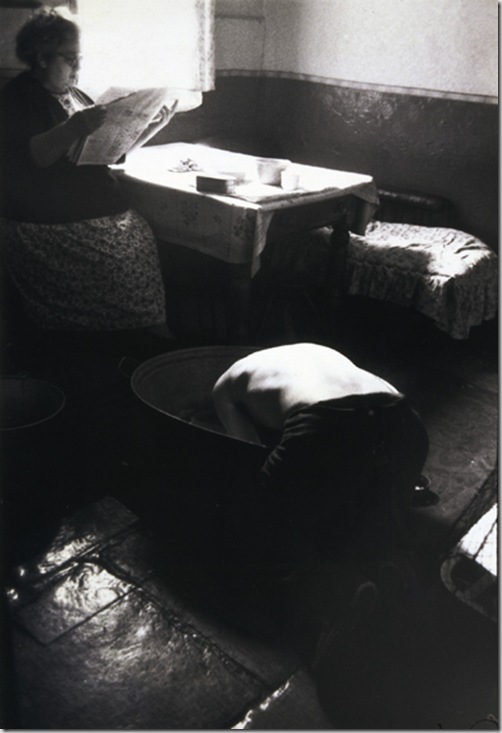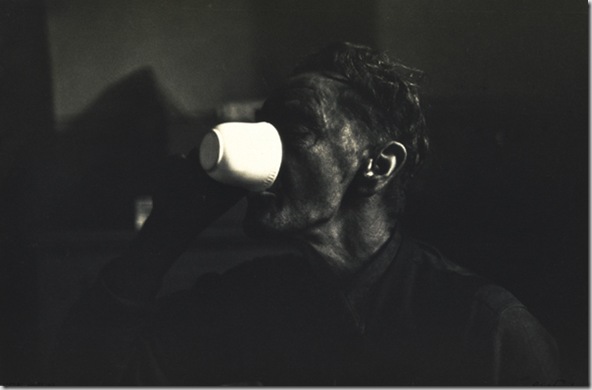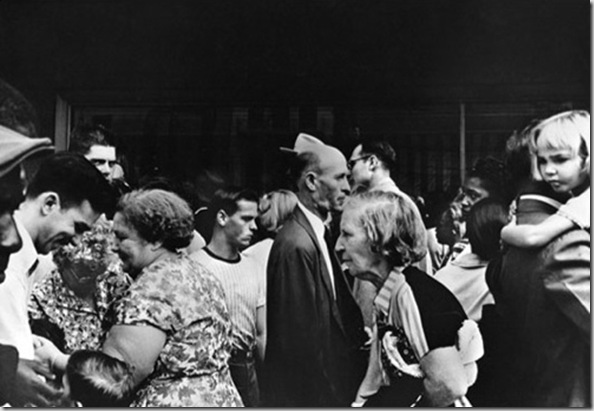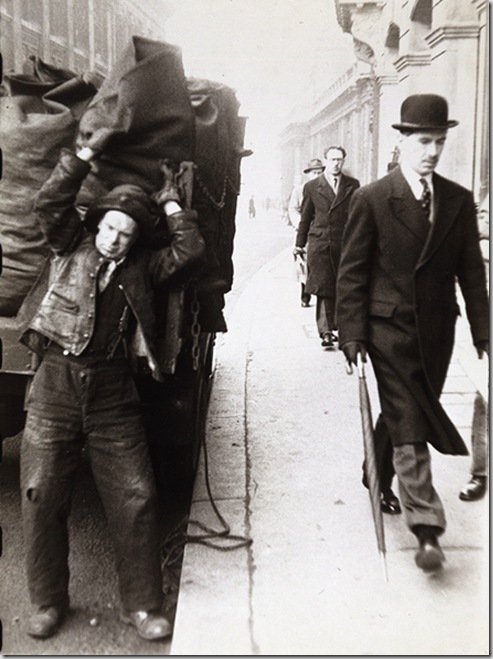American, born Switzerland, 1924
Robert Frank's fine flatulent black joke on American politics can be read as either farce or anguished protest. It is possible that Frank himself was not sure which he meant. In 1956, he was still a relative newcomer to the United States, and his basic reaction might well have been one of dumb amazement as he investigated the gaudy insanities and strangely touching contradictions of American culture.
 Ben James and His Wife, Wales 1953 © Robert Frank
Ben James and His Wife, Wales 1953 © Robert Frank
 Ben James, Wales 1953 © Robert Frank
Ben James, Wales 1953 © Robert Frank
A similar shock has been experienced by many others who have been suddenly transplanted as adults to this exotic soil. A few artists and intellectuals have even managed to turn the experience to their creative advantage, if their direction had not yet been too firmly set, as though a new country might be a substitute for being born again. It is tempting to believe that Frank's emergence in the fifties as a photographer of profound originality was a measure of his success in meeting on artistic grounds the very difficult challenge of a radically new culture. It is in any case undeniable that his work underwent a remarkable change during these years.
 Caerau, Wales 1953 © Robert Frank
Caerau, Wales 1953 © Robert Frank
 Café, Beaufort, South Carolina © Robert Frank
Café, Beaufort, South Carolina © Robert Frank
His earlier, European work had been in comparison almost luxurious: graphically rich, poetically elliptical, tender in spirit, half painterly in surface. By the time of Adlai Stevenson's second campaign these suggestions of homage to known artistic virtues had vanished; Frank's work had become dry, lean, and transparent. He had forged a new style: a weapon that was as clean and functional and American as a double-bitted ax. The subject matter of Frank's pictures was not in itself shocking.
 Canal Street– New Orleans-The Americans. (plate 19) © Robert Frank , 1955
Canal Street– New Orleans-The Americans. (plate 19) © Robert Frank , 1955
 Charleston, South Carolina © Robert Frank
Charleston, South Carolina © Robert Frank
Everyone knew about chromium and plastic luncheonettes, and tailfins and jukeboxes and motels and motorcycles and the rest of it. But no one had accepted without condescension these facts as the basis for a coherent iconography for our time. Frank postulated that one might with profit take seriously what the people took seriously. His proposition worked because of the force and penetration of his vision.
 Elevator, Miami Beach, 1955 © Robert Frank
Elevator, Miami Beach, 1955 © Robert Frank
 Frank sought to compile a spontaneous record of a man seeing this country for the first time. Indianapolis, 1956 is typically short on particulars but laden with symbols. © Robert Frank
Frank sought to compile a spontaneous record of a man seeing this country for the first time. Indianapolis, 1956 is typically short on particulars but laden with symbols. © Robert Frank
The photograph reproduced here is a perfect specimen of what was at the time a new genus of picture. The human situation described is not merely faceless, but mindless. From the fine shiny sousaphone rises a comic strip balloon that pronounces once more the virtue of ritual patriotism.
 London 1951-52 © Robert Frank
London 1951-52 © Robert Frank
 © Robert Frank – Paris – 1949 /1952
© Robert Frank – Paris – 1949 /1952
On either side of the tuba-player stand his fellows, as anonymous and as dependable as he. It is somehow proper --- funnier, sadder, and truer --- that the occasion should have been an Adlai Stevenson rally.
from "
Looking at Photographs " by John Szarkowski
All images © Robert Frank
 Frank sought to compile a spontaneous record of a man seeing this country for the first time. Indianapolis, 1956 is typically short on particulars but laden with symbols. © Robert Frank
Frank sought to compile a spontaneous record of a man seeing this country for the first time. Indianapolis, 1956 is typically short on particulars but laden with symbols. © Robert Frank 









Nessun commento:
Posta un commento